Opening 16/11 - 16/11 - 31/12, 2011
-
Becky Beasley
The Outside
The Outside, first solo show of Becky Beasley at the gallery, forms the second part of the trilogy, ‘Late Works’, the first part of which was produced in 2010.The trilogy will be concluded with a further project and three-part bookwork in 2012.
The starting point for The Outside, was Beasley’s interest in Casa Mollino, an apartment in Turin, which Mollino bought in 1960 and spent the remaining years of his life decorating. He never lived in the Casa Mollino; it was intended as a kind of ‘afterlife’ tomb. Through his interest in the Egyptian Museum in Turin, he was aware that the royal architect Kha decorated his own future tomb in his spare time, and so Mollino, like Duchamp with his Étant donnés (1946-66), similarly spent the last years of his life working on it in relative secrecy.
It incorporates many of the features presented in Utopia e Ambientazione (Utopia & Setting), published in consecutive issues of Domus in 1949, revealing Mollino’s own philosophy of decor as deeply trans-historical. In this two-part essay Carlo Mollino presents a history of the interior. He writes eloquently, in broad yet precise and, at times, flamboyant sweeps, about how different societies produce varieties of interior experiences. Utopia e Ambientazione functions both as a useful history and also as a catalogue of Mollino’s own personal influences. Beasley had the essay translated into English for the first time as part of her research. Another text, Mollino’s beautifully produced book, Il Messaggio Dalla Camera Oscura (Message From the Darkroom), also first published in 1949, is about photography and functions similarly as both a history and a personal catalogue of influences and meditations.
For Beasley, the apartment offered a very rich three-dimensional space through which to think more deeply about her existing interests in photography. The Outside is an exhibition in which framed photographic works become sculptural works. The dimensions of the cedar frames are all based on the blueprints for a pair of swing doors which Mollino designed specifically for the apartment, but did not ultimately make. He opted for a folding door. Two standing sculptures, Nolens Volens (u), (r), (i) are presented within the main gallery. The artist’s hand printed gelatin silver prints of a section of white Chantilly lace hang loose within their frames, the back of the paper exposed but always viewed in relation to the lace image of an adjacent panel. Focus slips across the surface of the image. Shadows blur into the lower areas. Coloured acrylic glazing tones sections of the photographs of lace yellow and a delicate pinkish orange. This is the first time that the artist has used photographic panels within her sculptural work in this way. The titles of these works, Nolens Volens, come from the Latin meaning ‘unwilling, willing’ from which the common English phrase ‘willy nilly’, meaning haphazardly, or all over the place, is derived. A chance encounter is proposed, in which consequences are abandoned. For Beasley, Nolens Volens, is also a way of considering what might be a photograph with no back or no front, but simply an experience without these oppositions. Yellow is the colour of friendship; pinkish orange of affection. This is The Outside.
The six wall-hung works, Setting (C.A.) (R.L.) (O.M.) (O.L.) (L.I.) (N.O.), combine the same lace photograph panels with fragments of a designed, shelved object. At once receding and expanding visually, like a Chinese paper game, the works seem to fold into and out of one another, each work becoming a whole, while a fragment. It is not so much a matter of mentally moving around an object, but of an un-defining of interior and exterior, through the processes of framing, reversal and repetition. This is The Outside.
A third sculptural work, Nolens Volens (Setting), incorporates two piles of off-set litho prints of a small section of the Chantilly lace. The sheets are offered as a gift to the visitor. The repeat pattern of the lace image allows the sections to meet and join endlessly. For Beasley, this work brings another meaning to the word setting, which in English also refers to the setting of a table for a meal; an invitation to the visitor to use the sheets as place mats for a meal.
The Outside, first solo show of Becky Beasley at the gallery, forms the second part of the trilogy, ‘Late Works’, the first part of which was produced in 2010.The trilogy will be concluded with a further project and three-part bookwork in 2012.
The starting point for The Outside, was Beasley’s interest in Casa Mollino, an apartment in Turin, which Mollino bought in 1960 and spent the remaining years of his life decorating. He never lived in the Casa Mollino; it was intended as a kind of ‘afterlife’ tomb. Through his interest in the Egyptian Museum in Turin, he was aware that the royal architect Kha decorated his own future tomb in his spare time, and so Mollino, like Duchamp with his Étant donnés (1946-66), similarly spent the last years of his life working on it in relative secrecy.
It incorporates many of the features presented in Utopia e Ambientazione (Utopia & Setting), published in consecutive issues of Domus in 1949, revealing Mollino’s own philosophy of decor as deeply trans-historical. In this two-part essay Carlo Mollino presents a history of the interior. He writes eloquently, in broad yet precise and, at times, flamboyant sweeps, about how different societies produce varieties of interior experiences. Utopia e Ambientazione functions both as a useful history and also as a catalogue of Mollino’s own personal influences. Beasley had the essay translated into English for the first time as part of her research. Another text, Mollino’s beautifully produced book, Il Messaggio Dalla Camera Oscura (Message From the Darkroom), also first published in 1949, is about photography and functions similarly as both a history and a personal catalogue of influences and meditations.
For Beasley, the apartment offered a very rich three-dimensional space through which to think more deeply about her existing interests in photography. The Outside is an exhibition in which framed photographic works become sculptural works. The dimensions of the cedar frames are all based on the blueprints for a pair of swing doors which Mollino designed specifically for the apartment, but did not ultimately make. He opted for a folding door. Two standing sculptures, Nolens Volens (u), (r), (i) are presented within the main gallery. The artist’s hand printed gelatin silver prints of a section of white Chantilly lace hang loose within their frames, the back of the paper exposed but always viewed in relation to the lace image of an adjacent panel. Focus slips across the surface of the image. Shadows blur into the lower areas. Coloured acrylic glazing tones sections of the photographs of lace yellow and a delicate pinkish orange. This is the first time that the artist has used photographic panels within her sculptural work in this way. The titles of these works, Nolens Volens, come from the Latin meaning ‘unwilling, willing’ from which the common English phrase ‘willy nilly’, meaning haphazardly, or all over the place, is derived. A chance encounter is proposed, in which consequences are abandoned. For Beasley, Nolens Volens, is also a way of considering what might be a photograph with no back or no front, but simply an experience without these oppositions. Yellow is the colour of friendship; pinkish orange of affection. This is The Outside.
The six wall-hung works, Setting (C.A.) (R.L.) (O.M.) (O.L.) (L.I.) (N.O.), combine the same lace photograph panels with fragments of a designed, shelved object. At once receding and expanding visually, like a Chinese paper game, the works seem to fold into and out of one another, each work becoming a whole, while a fragment. It is not so much a matter of mentally moving around an object, but of an un-defining of interior and exterior, through the processes of framing, reversal and repetition. This is The Outside.
A third sculptural work, Nolens Volens (Setting), incorporates two piles of off-set litho prints of a small section of the Chantilly lace. The sheets are offered as a gift to the visitor. The repeat pattern of the lace image allows the sections to meet and join endlessly. For Beasley, this work brings another meaning to the word setting, which in English also refers to the setting of a table for a meal; an invitation to the visitor to use the sheets as place mats for a meal.
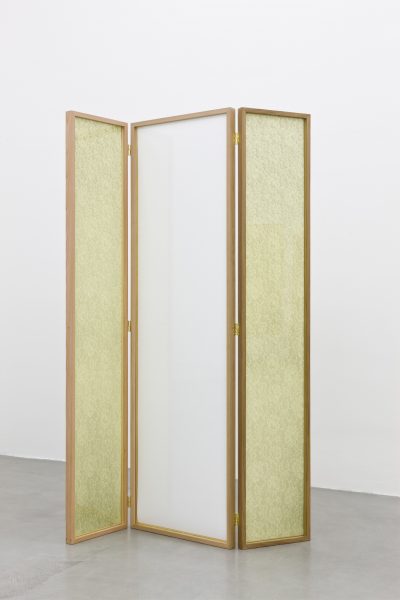 Nolens Volens (u), 2011Matt gelatin silver prints, cedar wood, yellow acrylic glass
Nolens Volens (u), 2011Matt gelatin silver prints, cedar wood, yellow acrylic glass
190×124×4 cm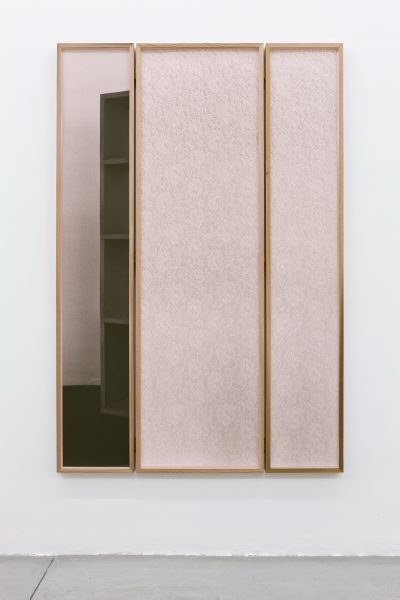 Setting (C.A.), 2011Gelatin silver prints, cedar wood, orange acrylic glass
Setting (C.A.), 2011Gelatin silver prints, cedar wood, orange acrylic glass
190×124×4 cm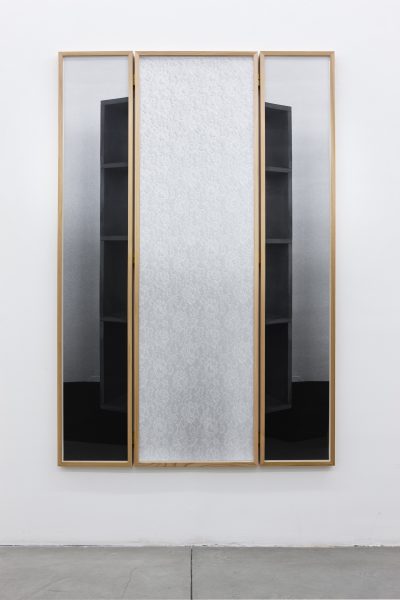 Setting (O.L.), 2011Gelatin silver prints, cedar wood, acrylic glass
Setting (O.L.), 2011Gelatin silver prints, cedar wood, acrylic glass
190×124×4 cm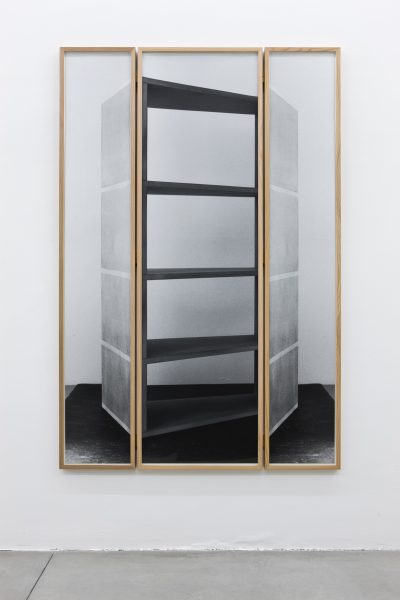 Setting (L.I.), 2011Gelatin silver prints, cedar wood, acrylic glass
Setting (L.I.), 2011Gelatin silver prints, cedar wood, acrylic glass
190×124×4 cm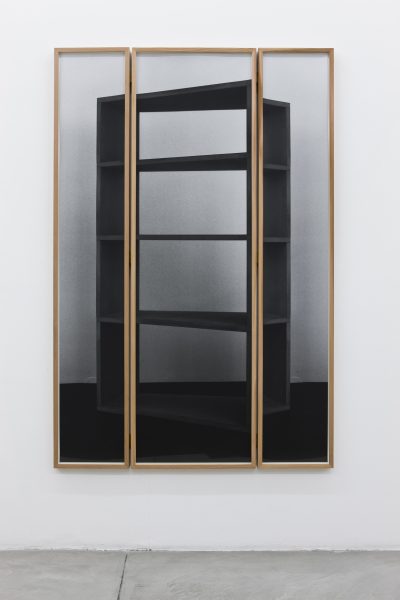 Setting (N.O.), 2011Gelatin silver prints, cedar wood, acrylic glass
Setting (N.O.), 2011Gelatin silver prints, cedar wood, acrylic glass
190×124×4 cm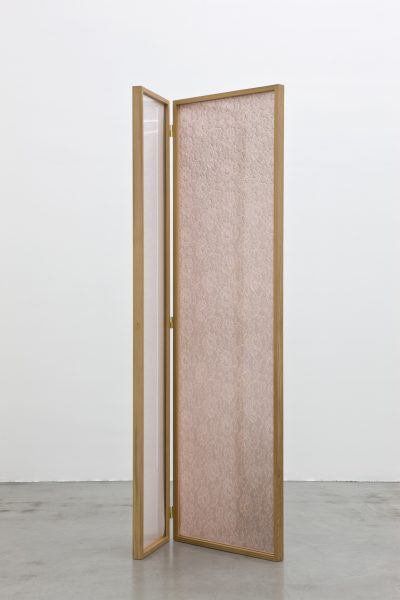 Nolens Volens (i), 2011Matt gelatin silver prints, cedar wood, orange acrylic glass
Nolens Volens (i), 2011Matt gelatin silver prints, cedar wood, orange acrylic glass
190 x 56+34 x 4 cm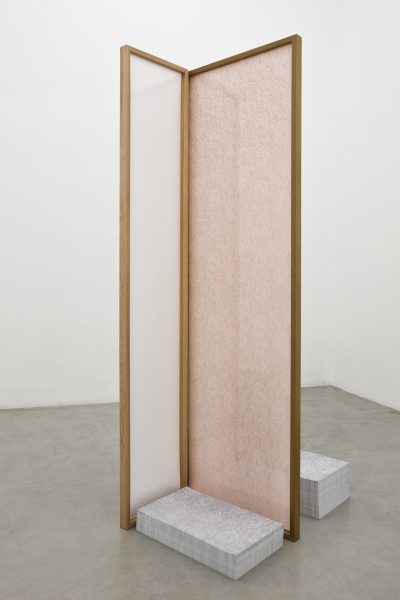 Nolens Volens (Setting), 2011Matt gelatin silver prints, cedar wood, orange acrylic glass, litho offset prints
Nolens Volens (Setting), 2011Matt gelatin silver prints, cedar wood, orange acrylic glass, litho offset prints
190 x 34+56+34 x 4 cm





























